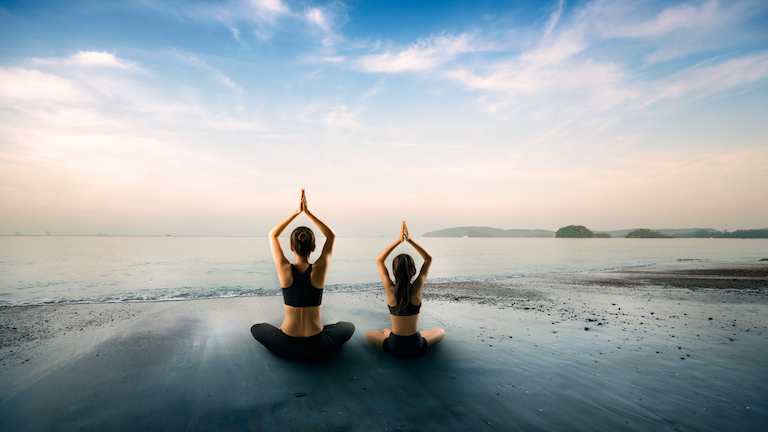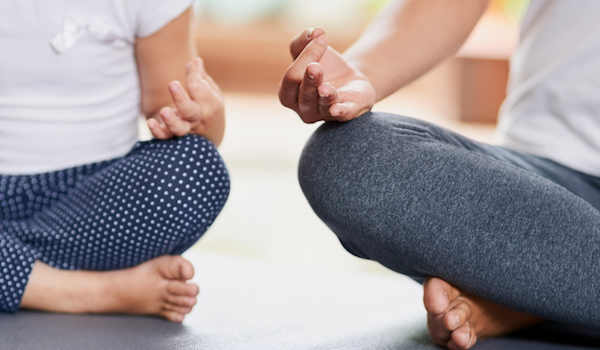Meditation isn’t just for yogis, but could help children express and deal with their emotions better. Co-author of new book Gita: Battle of the Worlds Sonal Patel gives a 7-step guide to helping your child meditate
Meditation – it’s a buzz-word these days, along with ‘artisanal’, ‘turmeric’, to name a few. Science tells us that meditation actually changes the grey matter in the brain.
People from all backgrounds, not only those rooted in Eastern philosophy, are discovering the vast array of scientifically proven health benefits that come from meditating.
These include decreased anxiety, stress and depression, better immunity, improved cognitive function, and a surge in positive emotions. These benefits apply to kids as much as they do to adults, in children perhaps even more so.
I was leading a guided meditation for children recently, and when I asked, ‘What do you think meditation is?’ a 7-year-old girl hesitantly replied, ‘Is it just sitting still and doing nothing?’
That is certainly what it looks like, but whilst there isn’t much happening on the outside, there is much going on, on the inside.
The best way to understand meditation is to practise it. Here are 7 steps to introduce your child to meditation:
1. Find a quiet place
Before you do anything, try to find a quiet place. It will be a challenge, especially for beginners, to focus the mind so you don’t want anything that will be a distraction.
That means no nearby conversations, no TV, no phones. Tricky, I know. But turning off from everything external is the first step.
Even without outside influence, our mind brings us plenty of distractions. If we can shut off some of the background noise, then it cuts out one more rabbit hole down which our thoughts might want to run away.
2. Posture is key
Whether your child sits cross-legged on the floor or on a chair, sitting with a straight spine is crucial when meditating.
There are seven centres of energy in the body – called chakras – and they are all located on the spine; this is the channel through which the energy flows. So no slumping – sit up straight and proud.
Then, relax. If you aren’t used to having to sit straight, this might be harder than it sounds. But where there is tension, that’s where the energy will go. Help your child to relax their body before even sitting down.
Practise some standing inhalations whilst tensing the body, and exhalations while relaxing the body. This has the added benefits of introducing them to the idea of directing the energy where you want it to go – which will be helpful when they meditate.
3. Start at the beginning
When I lead meditation in schools I keep it simple. After relaxing the body and sitting in the correct posture, I start by asking each child to place their finger at the point between their eyebrows – their spiritual eye. Once they have identified this point, they can lift their gaze gently to this point during meditation.
Then I suggest that they simply focus on their breath flowing in and flowing out. I remind them not to control their breath but simply to watch it, as they watch the waves on the shore.
Naturally, the mind will wander. Therefore, I periodically remind the children to bring their focus back to their breath and to consciously feel their body relaxed and calm.
Usually I finish the meditation with a visualisation, guiding the children to imagine themselves surrounded by light and energy. I remind them that they can visualise this anyway they like – bright light, glittery stars, magic super hero cape – you get the picture.
Then I ask them to envisage that light spreading to all those around them, then filling the room, then the school, then the city – and so on – until the entire globe is vibrating in that light and energy that started from each of them.
4. Keep it short and sweet
Contrary to ‘sitting there and doing nothing’ meditation can be hard work in the beginning. Like training the body, training the mind takes time and patience. Little and often is a good approach. When I meditate with my 7-year-old it is probably for no more than 5 to 8 minutes, and she has been meditating since she was 5.
Even that time period can be broken up into 2 or 3 sections, with little reminders from me to focus on her breath and to relax her body and emotions. The main point I would emphasise is to allow your child to guide you on how long they want to meditate. Once they start to feel the calmness and peace in meditation, they will want to sit for longer.
5. Tell them cool, famous people do it
Children aren’t always as open to our grand notions about what’s good for them as we might like. I explained all the scientific health benefits of mediation to a group of children recently.
However, it was only when I mentioned that Ariana Grande, Harry Styles and Katy Perry are celebrities who practise it, their ears suddenly pricked up. So make it relatable.
Here are a few famous quotes to get you off to a good start:
‘I meditate before going on stage – it helps me focus’ – Harry Styles
‘Meditation is a great way to keep my body well-centred while juggling shooting schedules and recording sessions’ – Ariana Grande
6. Give them ideas of when they can use meditation to help them
This is what we try to do in our book, in which our main character, Dev, has recently lost his father and in his grief, his emotions are all over the place.
Hopefully not many children will have to deal with this kind of trauma at such a young age, but they will all have experienced stress, anger, anxiety, apprehension and sadness.
Talk to your child about situations when they might find meditation particularly helpful. Ask them to think of examples too.
It’s a tool that will really empower them to be able to manage their own emotions as they get older. And the ability for them to talk to you about their emotions is important too.
7. Make it fun
Help children to understand and relate to the benefits of meditation by making it fun. My daughter loves arts and craft, and so we made a glitter water bottle together.
She shook the bottle and watched the multi coloured glitter spread like our thoughts do – mixing and multiplying in the water.
Then she let the bottle rest and we discussed how meditation is like stilling the water bottle and allowing all our thoughts and emotions to settle.
The beauty of meditation is that just a little practise can make a big difference. So, give it a try with your child and see what happens.

which draws from sacred Hindu scriptures to share ancient wisdom about meditation based on the teachings of Paramahansa Yogananda. Sonal has been meditating herself since she was 11.
Related Healthista Content
Heard of mindfulness meditation? Get ready for the mindful eating diet
10 tips for being mindful everyday that will change your life
Like this article? Sign up to our newsletter to get more articles like this delivered straight to your inbox.























































